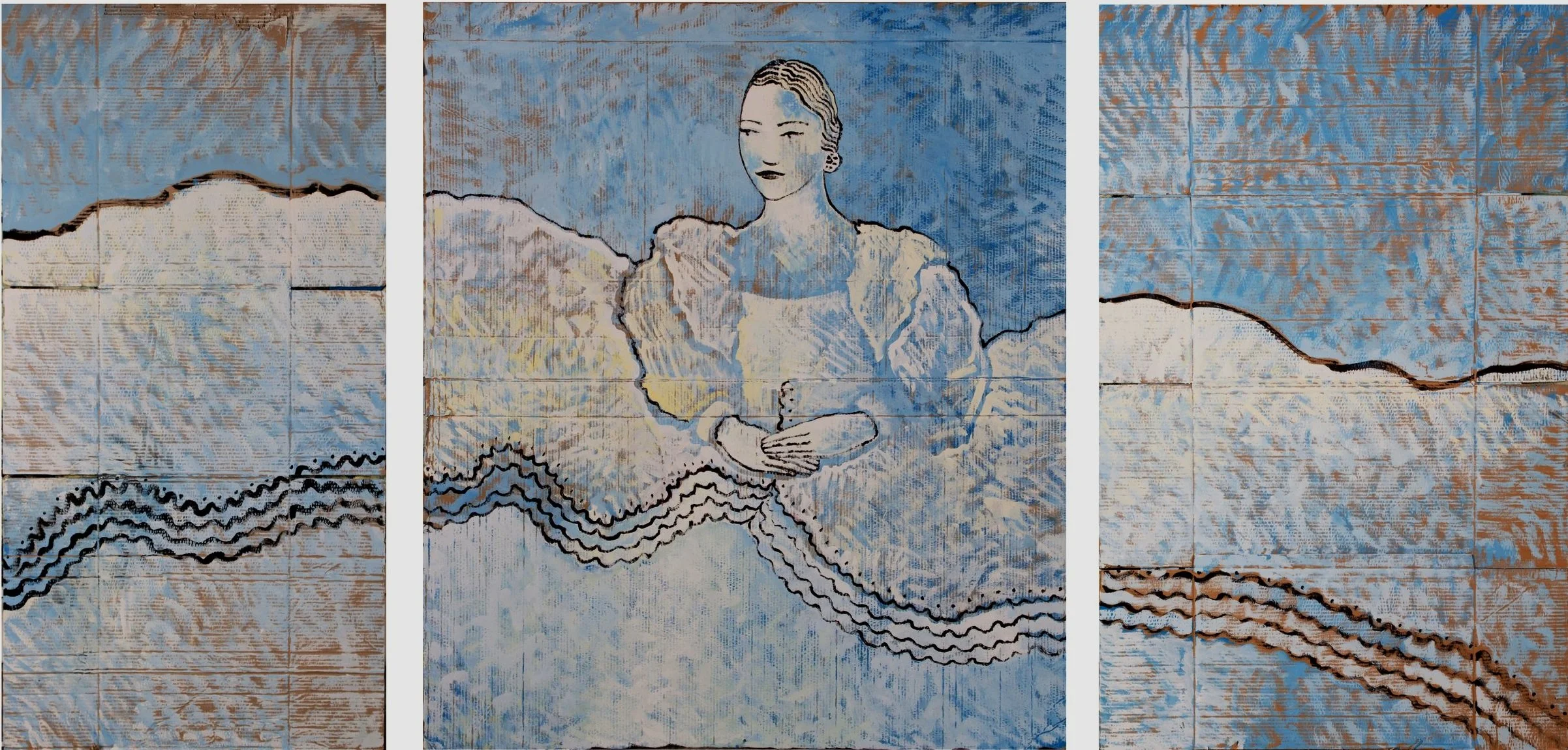Sofia Cacciapaglia: Incanto
Every beginning is only a sequel, after all
Curated by Emma Kathleen Hepburn Ferrer
April 13, 2023 - May 20, 2023
Opening April 13, 2023, 6-8 pm
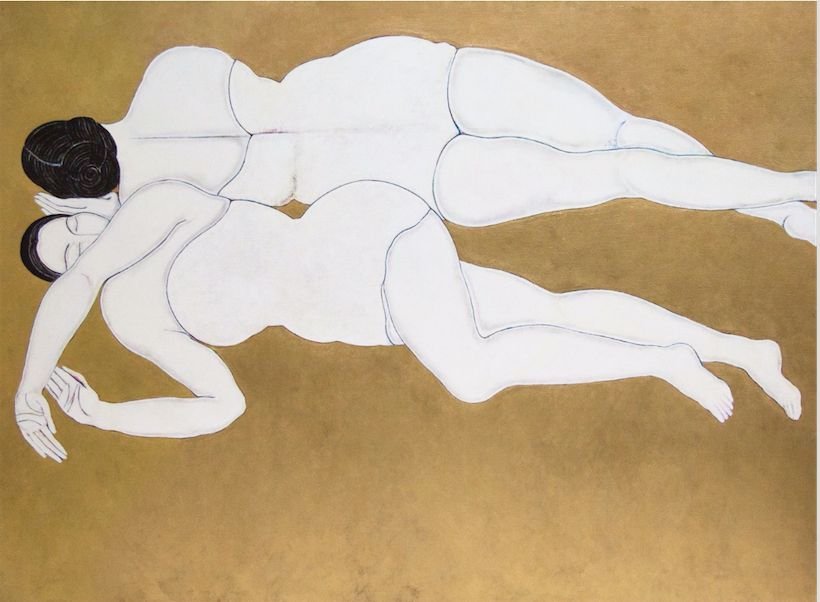

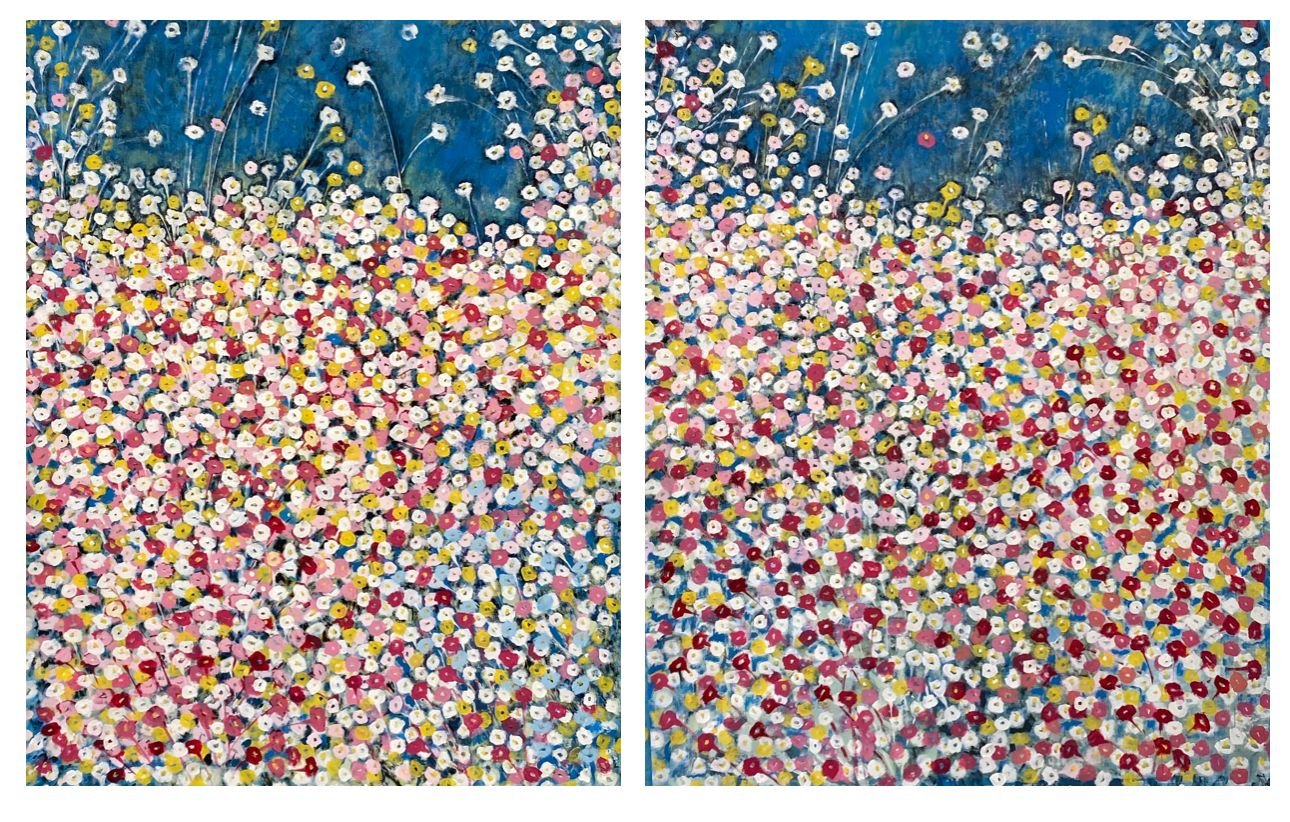

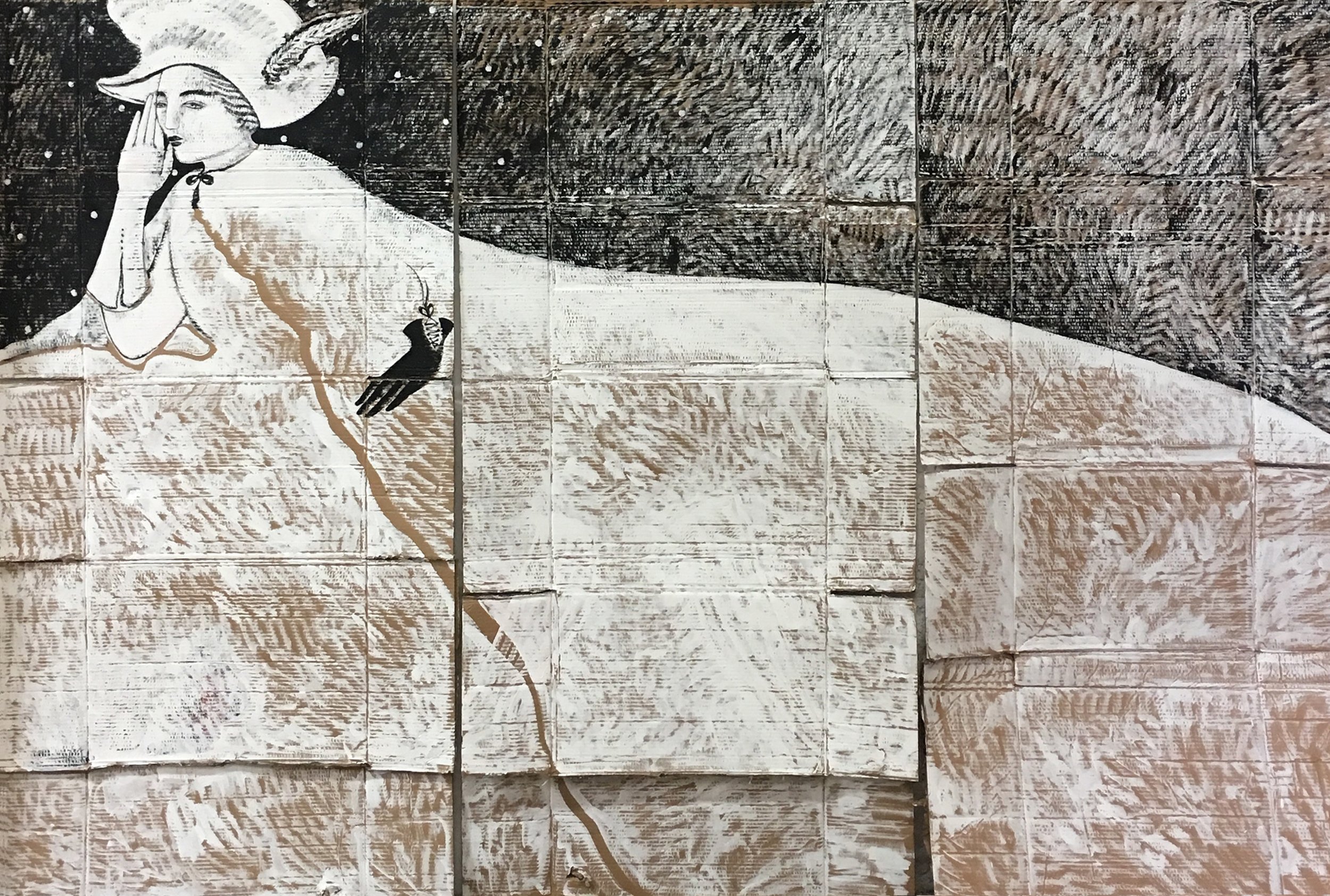
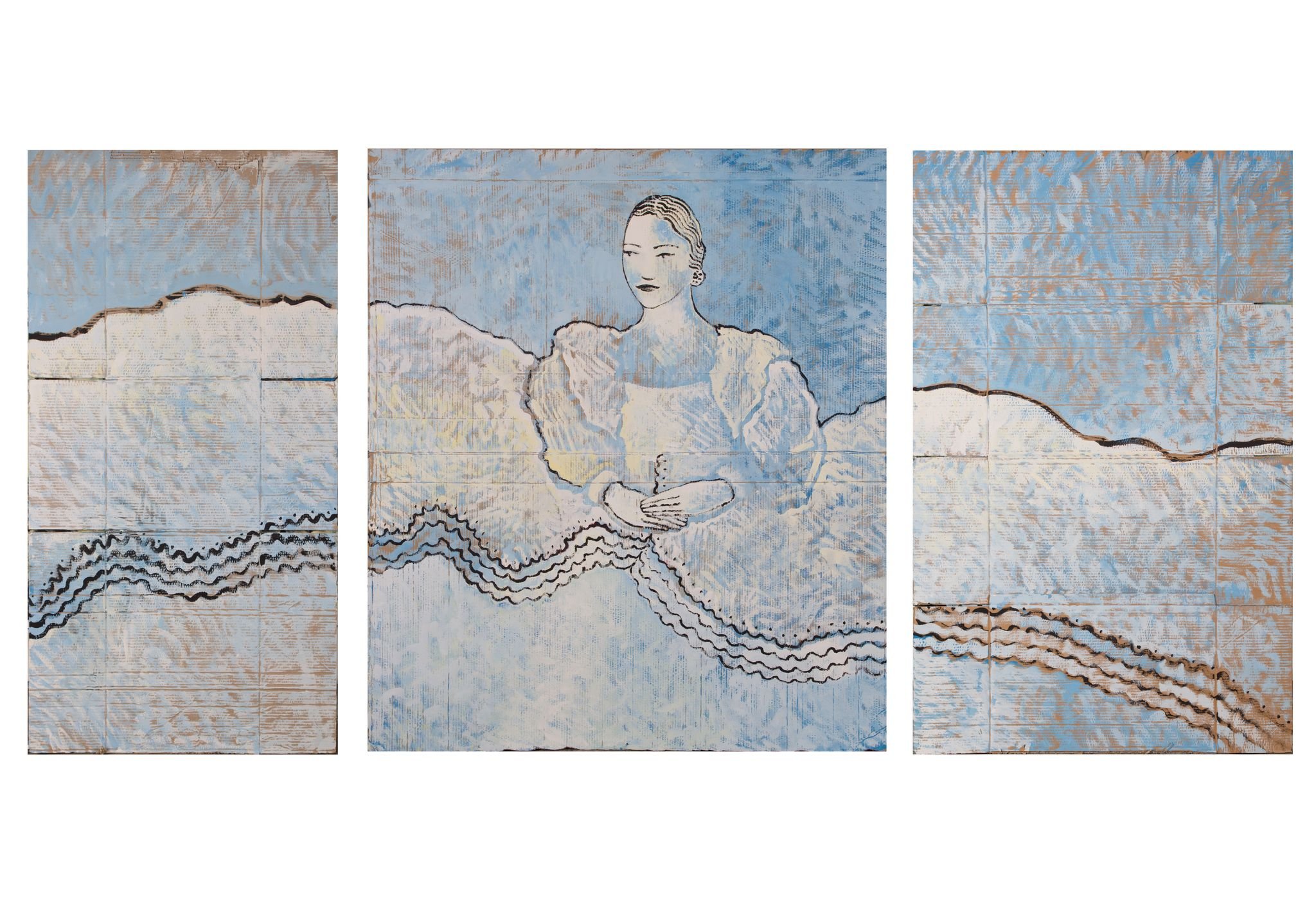
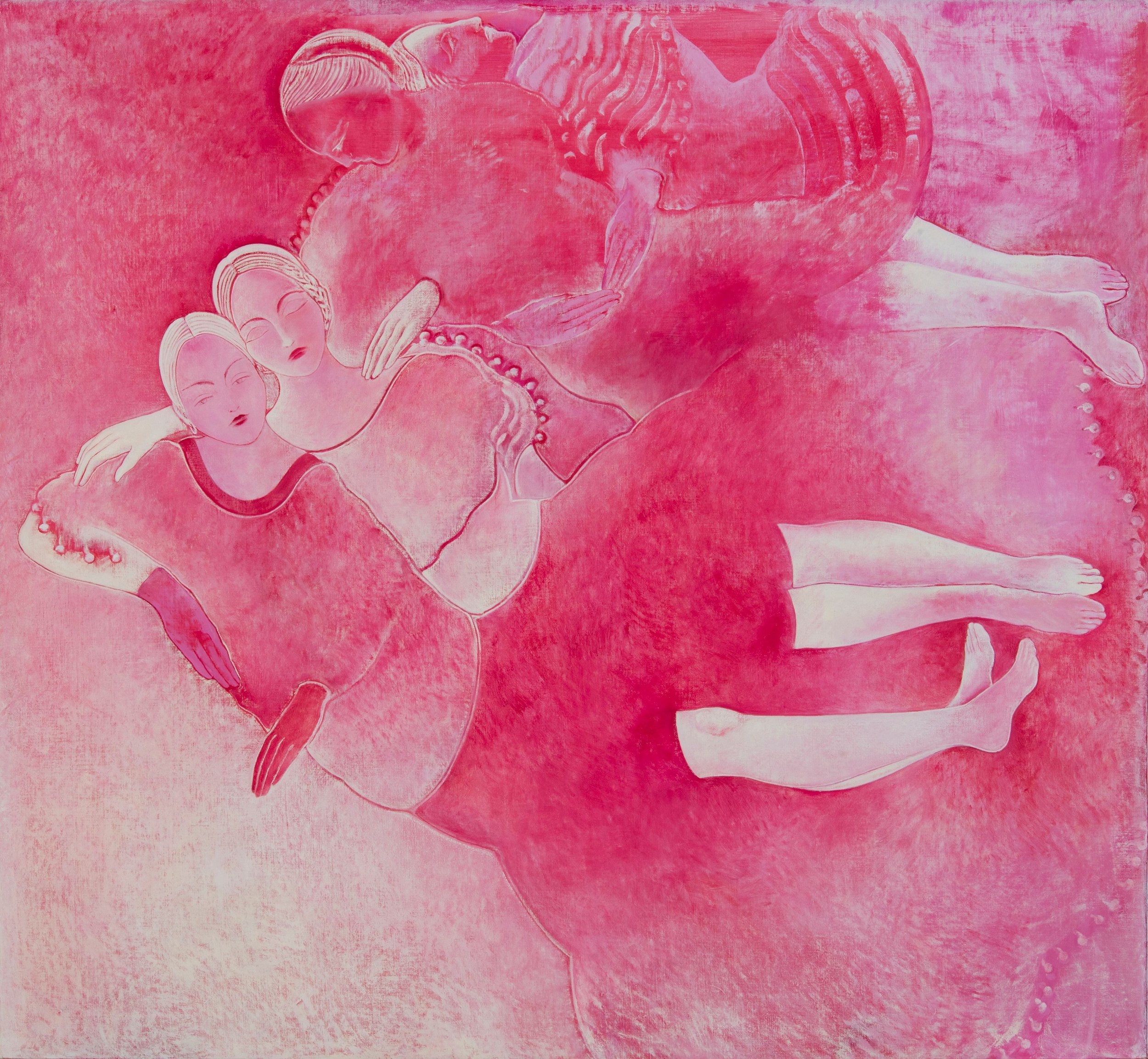
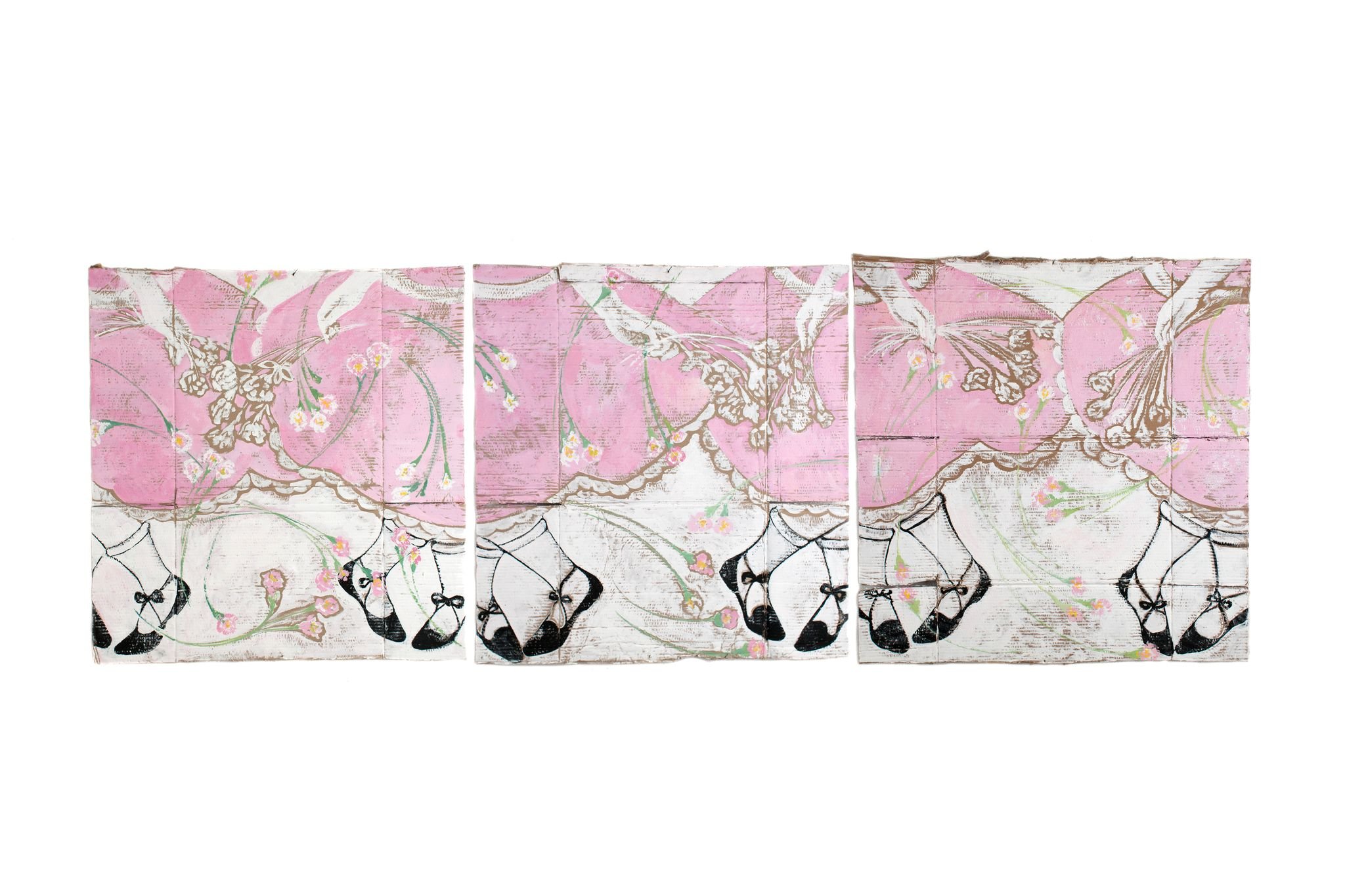
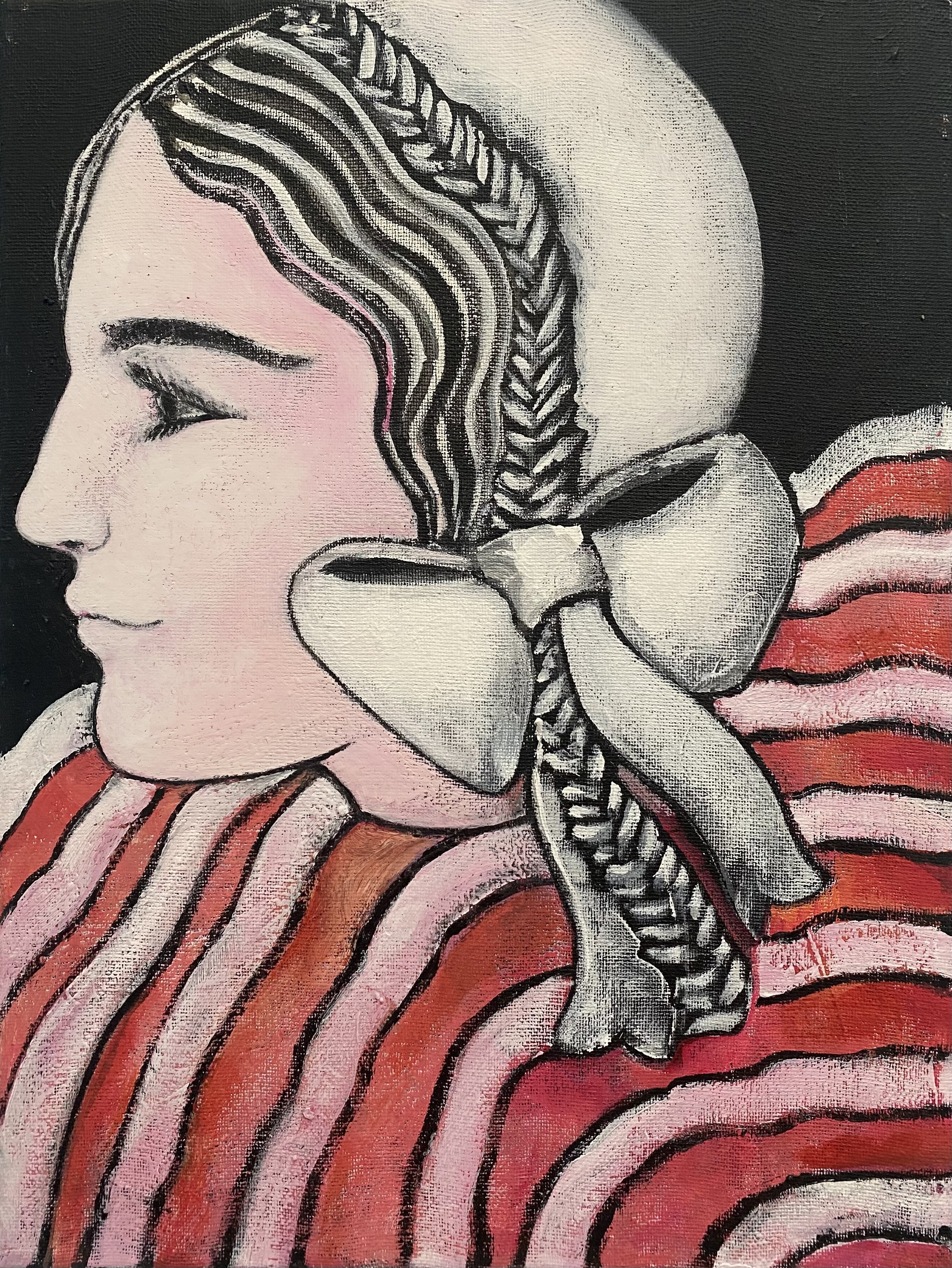
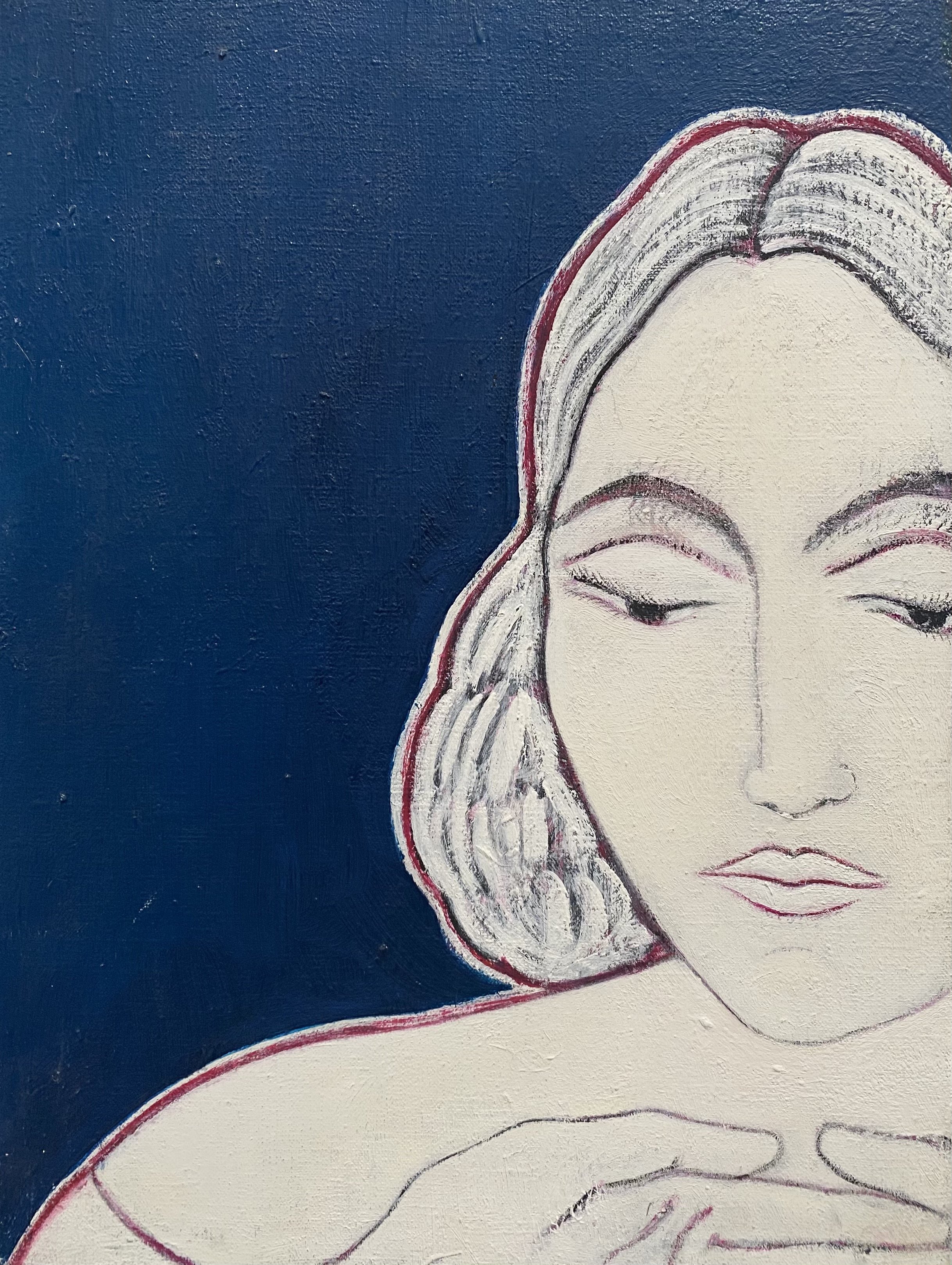
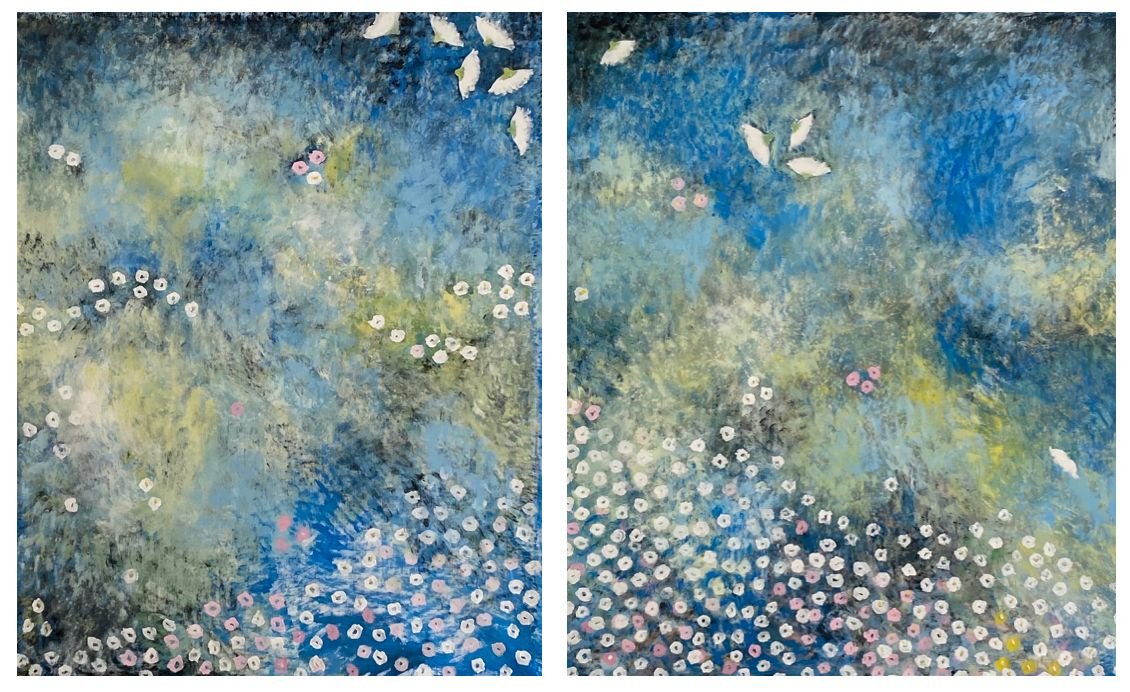
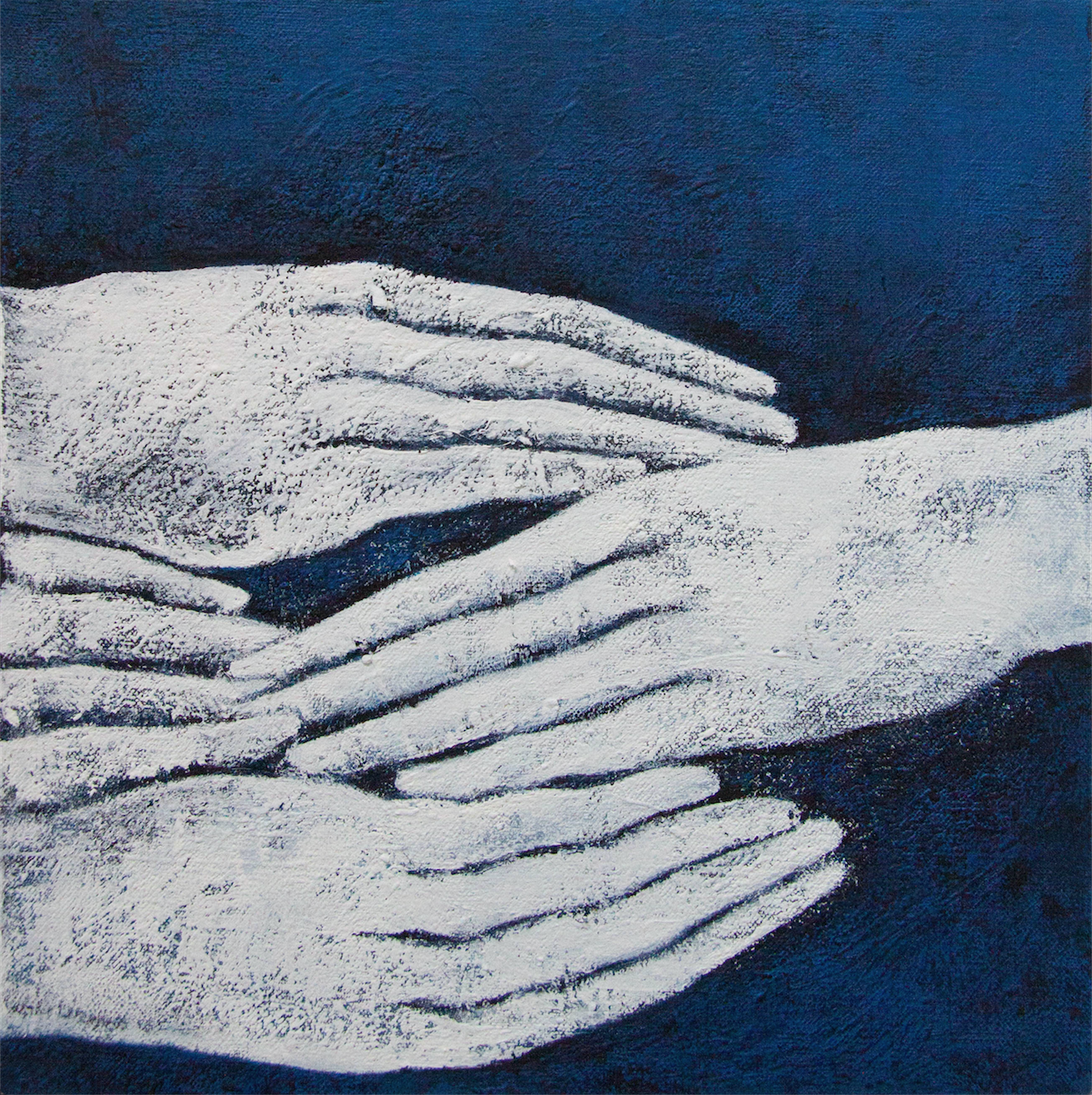
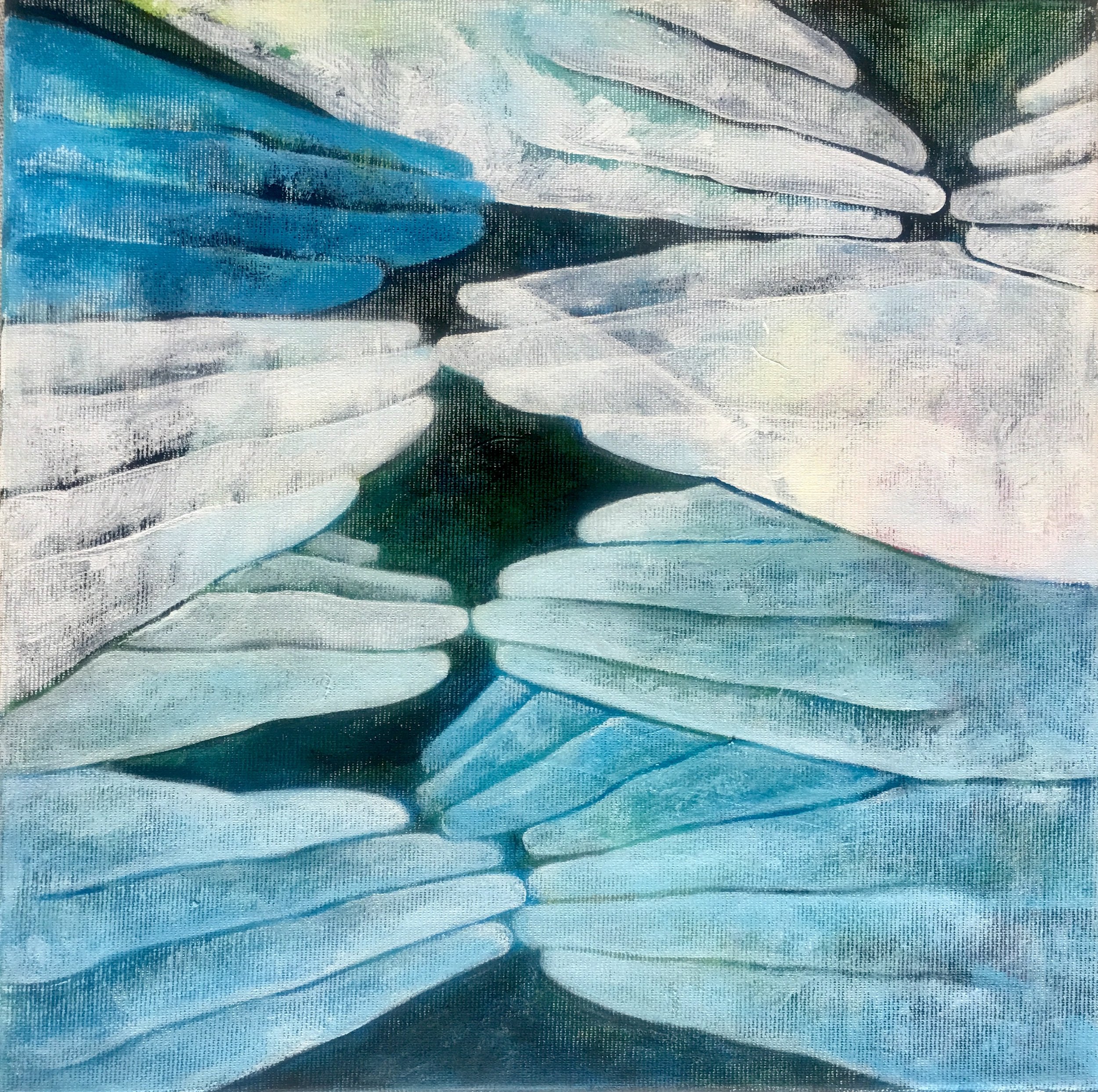
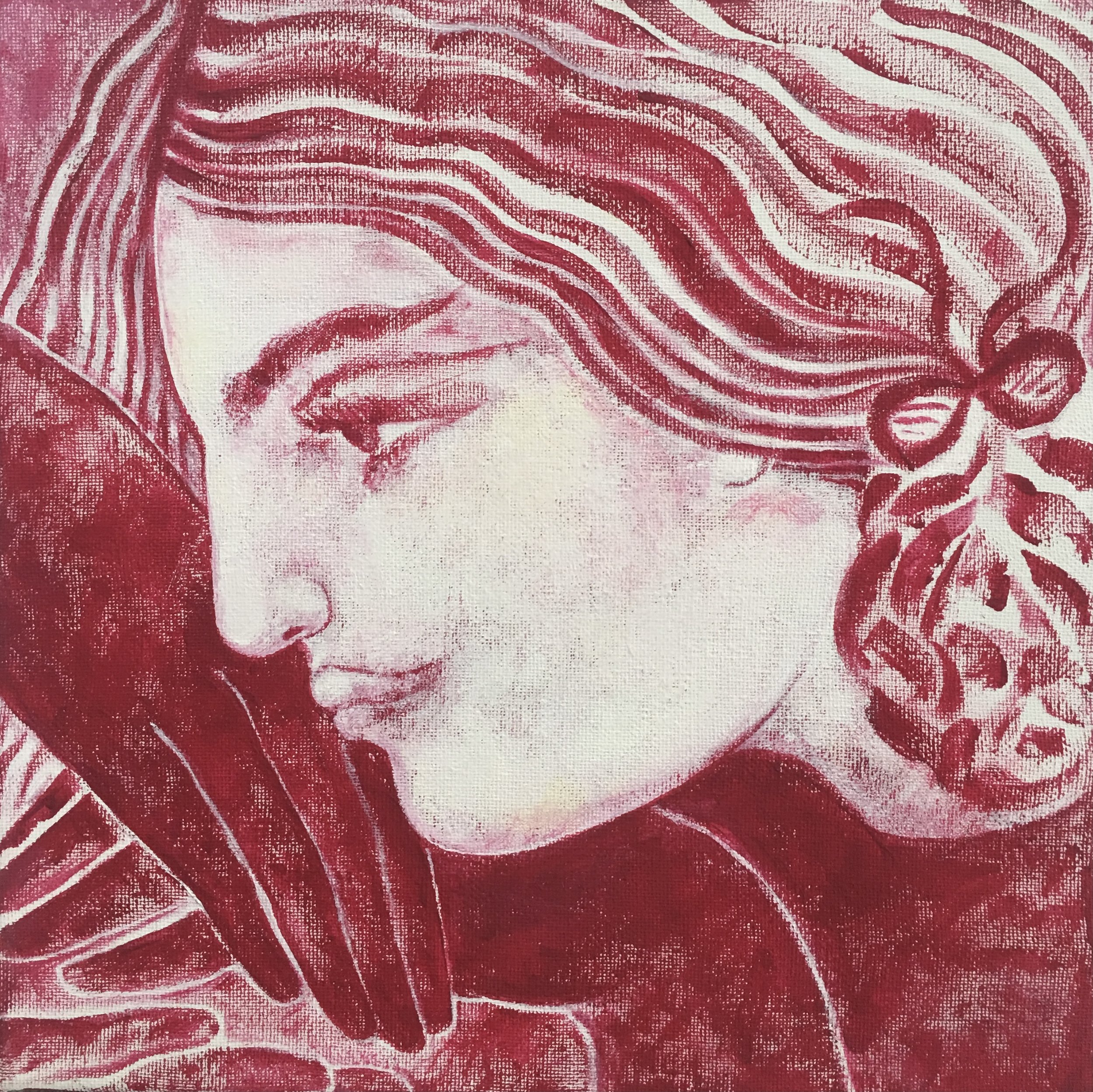

Sapar Contemporary is proud to present the first NYC gallery exhibition by Italian artist Sofia Cacciapaglia. Ranging from miniature paintings to monumental canvas and cardboard installations, Cacciapaglia’s works are a meditation on femininity and the emotional and spiritual co-existence of women. Her iconic larger-than-life works present women who are linked with each other through the rhythm of touching hands, dancing feet, falling hair, and secret glances. Eyes are portals into inner worlds — sometimes closed or blindfolded, other times open and full of mystery. One of Cacciapaglia’s favorite materials is discarded cardboard boxes which she transforms into supports for her paintings of women and gardens. This usage of old boxes and recycled packaging paper is tied to the artistic, historical, and social roots of Italian arte povera. In our modern age of ecological anxiety, the floral works speak directly not only to the cycles of women and seasons as a meditation on nature, but also the need for environmental renewal.
EMMA KATHLEEN HEPBURN FERRER AND SOFIA CACCIAPAGLIA IN CONVERSATION (excerpt)
EKHF: What did you admire about the Sicilian surroundings and culture whilst growing up? Were there specific historical or archaeological sites that spoke to you profoundly? What do you think of Sicilian history and art; from its sculptural traditions to its various mosaics, and oriental icons therein?
SC: Sicily is part of my life experience. I have spent every summer of my life in Sicily, in my family home that faces the sea. It is a very strong land to which one remains inevitably bound and intimately enraptured. I feel my work is deeply "Italic" in its contrasting aspects of strength, joy, and melancholy. I find Sicily in this work; undoubtedly it has been greatly influenced by it. The mosaics of Piazza Armerina are of great inspiration to me with their closed, essential, and perfect forms recalling the classical world.
In my painting I bring together the things I love: all those beautiful things for which I have created a dependency, which over the years have become the basis of my pictorial research. The sea, femininity, the islands: "with their closed shapes that seem to have no weight on the horizon". The facades of the churches, white and candid like ice cream, sweets like ‘cassata’, so rich that they seem embroidered like the clothes in “The Leopard” by Giuseppe Tomasi di Lampedusa, an important Italian novel retracing the steps of the Italian “Risorgimento”, or unification of Italy at the end of the 19th century.
Sicily: the strong faces and nostalgic looks that I recognize in my paintings. The blinding and total light of midday, which moves the viewer. And the abandoned gardens, for Sicily is also called "the island of gardens". Sicily is where there are no rules, and everything is lush, messy, extremely full of life, and the flowers grow tall and free from boundaries.
EKHF: What is your physical process like; do you sketch or paint directly on the support?
SC: I never do sketches. The first thing that comes is always the best. It has a freshness to it that is unrepeatable.
EKHF: What is the importance of the materials you use? Is there a historical-sociological reference to a past movement?
SC:I work on linen with oil paints. Oil is a material that I love because it allows, through its continuous stratification of color, to give the work infinite richness and vibration. Works on canvas are almost always slow and long. I also paint on wrapping paper and discarded cardboard boxes, using acrylic which is more functional with these supports. I love these materials, which are poor materials - for me, they have an authentic beauty and a noble aspect, especially given the camel color of the paper and cardboard which I feel very truthful and kindred to me. The cardboard, with its internal structure, gives each brushstroke an extra poetic mark. Cardboard has always been used in the history of art, but in this particular historical moment I love making the floral works on the boxes that I find because they carry an environmental message with them, wherein a discarded material comes back to life, through painting, in the spring.
ABOUT ARTIST
Sofia Cacciapaglia was born in Ponte dell’Olio, Italy in 1983. She studied Fine Art at the Accademia di Belle Arti di Brera in Milano where she graduated in 2006. After graduating she moved to New York where in 2007 she had her first solo show at Industria SuperStudio, curated by photographer Fabrizio Ferri. Since then her work has been shown in galleries, foundations, museums in Italy, Switzerland, UK and China. In 2011 she was the youngest artist invited to the Italian Pavillon for the 54th International Art Exhibition La Biennale di Venezia. For the publication of the first monograph on her work, she completed “Locus Amoenus” in May 2019, her first large 360° installation that covered all the walls of her studio with discarded cardboard boxes, which she transformed into a blossoming garden from floor to ceiling. This work brings with it an environmental message, giving the salvaged material a second life through the representation of the rebirth of nature.
ABOUT CURATOR
Emma Kathleen Hepburn Ferrer is a visual artist and a curator based in Camaiore, Italy. Ferrer was born in Morges, Switzerland and grew up in Florence, Italy where she was exposed to Medieval and Renaissance iconography as well as artists who were active in Florence in later centuries. Ferrer’s curatorial practice is informed by her own personal history and intersect with her artistic practice, focusing on themes such as enigma, the human body, and spirituality. A rigorous dance discipline from a young age contributed to Ferrer's deep interest in the physicality of the human body, dress, and physical expression, which comes to the forefront of her personal and curatorial work. Perhaps it is not by chance that both exhibitions curated by Ferrer for Sapar Contemporary, “Ideas Get Dressed” in 2018 and Sofia Cacciapaglia’s solo exhibition in 2023 have been explorations of not just the female body itself, but of the costumes, messages, and panoplies which cloak, veil or adorn it.

